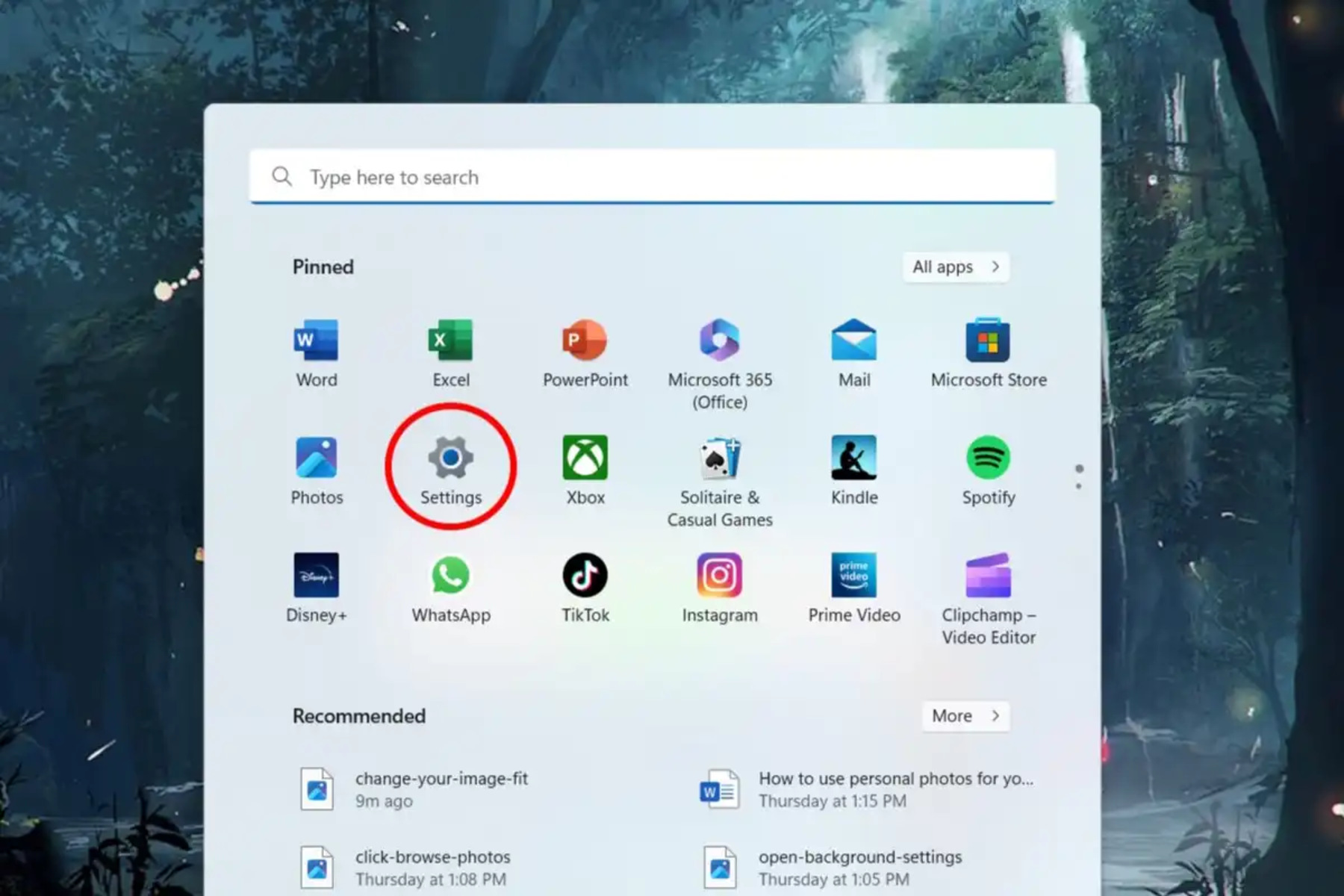Introduction
When it comes to web browsing, modern browsers offer a plethora of settings and options that allow users to customize their browsing experience. From privacy and security settings to accessibility features and extensions, browsers provide a wide array of tools to cater to individual preferences and needs. However, finding these settings can sometimes be a daunting task, especially for those who are not familiar with the layout and organization of browser menus.
In this comprehensive guide, we will explore the process of finding browser settings on some of the most popular web browsers, including Google Chrome, Mozilla Firefox, Safari, and Microsoft Edge. By understanding where to locate these settings, users can take full advantage of the customization options available to them, ensuring a seamless and personalized browsing experience.
Let's embark on a journey through the digital landscapes of these browsers, uncovering the hidden gems of settings and features that await discovery. Whether you're a tech-savvy enthusiast or a casual user looking to enhance your browsing experience, this guide will equip you with the knowledge to navigate the intricate web of browser settings with confidence and ease. So, without further ado, let's dive into the world of browser settings and unlock the potential for a more tailored and enjoyable browsing experience.
Finding Browser Settings on Google Chrome
Google Chrome, known for its sleek interface and robust features, offers a wide range of settings that users can customize to suit their preferences. Whether you're looking to enhance privacy, manage extensions, or tweak browsing preferences, accessing Chrome's settings is a straightforward process.
Accessing Settings
-
Using the Menu: In the top-right corner of the Chrome window, you'll find three vertical dots, known as the "Menu" icon. Clicking on this icon will reveal a dropdown menu, where you can navigate to the "Settings" option.
-
Direct URL: Alternatively, you can type "chrome://settings/" into the address bar and press Enter. This will take you directly to the Chrome settings page.
Navigating Settings Categories
Once you've accessed the settings, you'll find a sidebar on the left-hand side, categorizing the various options available. These categories include:
-
Privacy and Security: Here, you can manage site settings, clear browsing data, and configure security preferences.
-
Appearance: Customize the browser's appearance, including themes, the default font size, and the display of the bookmarks bar.
-
Sync and Google Services: Manage synchronization settings and access Google services such as the built-in password manager and payment methods.
-
Advanced: Explore advanced settings, including accessibility options, system configurations, and experimental features.
Managing Extensions
To access the extensions settings, you can either navigate to the "Extensions" category in the settings sidebar or type "chrome://extensions/" into the address bar. Here, you can manage installed extensions, configure their settings, and explore the Chrome Web Store for new additions.
Additional Tips
-
Search Bar: At the top of the settings page, there's a search bar that allows you to quickly find specific settings by typing keywords or phrases.
-
Chrome Flags: For advanced users, the "chrome://flags/" URL provides access to experimental features and settings that are still in development.
By familiarizing yourself with the location and organization of Chrome's settings, you can effortlessly tailor your browsing experience to align with your preferences and needs. Whether it's adjusting privacy settings, customizing the appearance, or managing extensions, Chrome's settings offer a wealth of options to explore and personalize.
As we've navigated through the intricacies of finding browser settings on Google Chrome, let's now turn our attention to another popular browser, Mozilla Firefox, and uncover the pathways to its diverse range of settings and features.
Finding Browser Settings on Mozilla Firefox
Mozilla Firefox, renowned for its flexibility and extensive customization options, empowers users with a rich array of settings to tailor their browsing environment. Navigating through Firefox's settings allows users to fine-tune privacy preferences, manage extensions, and personalize the overall browsing experience.
Accessing Settings
-
Using the Menu: Located in the top-right corner of the Firefox window, the three horizontal lines, known as the "Menu" icon, provide access to the browser's settings. Clicking on this icon reveals a dropdown menu, where you can navigate to the "Options" or "Preferences" section, depending on your operating system.
-
Direct URL: Alternatively, you can type "about:preferences" into the address bar and press Enter. This will directly lead you to the Firefox preferences page, where you can explore a multitude of customization options.
Navigating Settings Categories
Upon accessing the settings, you'll encounter a well-organized layout, categorizing the various options available. These categories include:
- General: Customize the browser's startup behavior, set the default homepage, and configure download settings.
- Privacy & Security: Manage privacy preferences, control data collection, and configure security settings such as blocking pop-up windows and managing passwords.
- Extensions & Themes: Explore and manage installed extensions, themes, and appearance customization options.
- Home: Set your preferred homepage and new tab page, allowing for a personalized browsing experience from the moment you launch Firefox.
- Search: Configure search engine preferences and customize search bar settings.
Managing Extensions
Firefox offers a dedicated section within the settings to manage extensions and themes. Here, users can explore installed extensions, customize their settings, and access the Add-ons Manager to discover new extensions from the Firefox Add-ons website.
Additional Tips
- Search Bar: Similar to Chrome, Firefox's settings page features a search bar at the top, enabling users to swiftly locate specific settings by entering relevant keywords or phrases.
- Advanced Settings: For users seeking more advanced configurations, the "about:config" URL provides access to a wide range of advanced settings and experimental features.
By familiarizing yourself with the layout and organization of Firefox's settings, you can effortlessly tailor your browsing experience to align with your preferences and requirements. Whether it's enhancing privacy, customizing the appearance, or managing extensions, Firefox's settings offer a wealth of options to explore and personalize.
As we've delved into the intricate pathways of finding browser settings on Mozilla Firefox, let's now shift our focus to another widely used browser, Safari, and uncover the avenues to its diverse range of settings and features.
Finding Browser Settings on Safari
Safari, Apple's flagship web browser, offers a seamless and intuitive browsing experience, complemented by a range of customizable settings to cater to users' preferences. Navigating through Safari's settings allows users to fine-tune privacy preferences, manage extensions, and personalize the overall browsing environment.
Accessing Settings
To access Safari's settings, users can follow these simple steps:
-
Using the Menu: In the top-left corner of the Safari window, you'll find the "Safari" menu. Clicking on this menu reveals a dropdown list, where you can navigate to the "Preferences" option.
-
Keyboard Shortcut: Alternatively, you can use the keyboard shortcut "Command + ," (Command key and comma key) to directly access the Safari preferences.
Navigating Settings Categories
Upon accessing the settings, users will encounter a well-organized layout, categorizing the various options available. These categories include:
-
General: Customize the browser's startup behavior, set the default homepage, and configure download settings.
-
Privacy: Manage privacy preferences, control website tracking, and configure cookie settings.
-
Security: Configure security settings such as fraud prevention, pop-up window blocking, and managing website permissions.
-
Extensions: Explore and manage installed extensions, enabling users to enhance their browsing experience with additional features and functionalities.
Managing Extensions
Safari provides a dedicated section within the settings to manage extensions. Here, users can explore installed extensions, customize their settings, and access the App Store to discover new extensions that align with their browsing needs.
Additional Tips
-
Search Bar: Similar to other browsers, Safari's settings page features a search bar at the top, allowing users to swiftly locate specific settings by entering relevant keywords or phrases.
-
Advanced Settings: For users seeking more advanced configurations, Safari offers a range of advanced settings and experimental features accessible through the preferences window.
By familiarizing themselves with the layout and organization of Safari's settings, users can effortlessly tailor their browsing experience to align with their preferences and requirements. Whether it's enhancing privacy, customizing the appearance, or managing extensions, Safari's settings offer a wealth of options to explore and personalize.
As we've navigated through the intricate pathways of finding browser settings on Safari, users can now confidently explore and leverage the diverse range of settings and features that Safari has to offer, ensuring a seamless and personalized browsing experience.
Finding Browser Settings on Microsoft Edge
Microsoft Edge, the innovative web browser from Microsoft, offers a wealth of customizable settings and features to empower users with a tailored browsing experience. Navigating through Edge's settings allows users to fine-tune privacy preferences, manage extensions, and personalize their overall browsing environment.
Accessing Settings
To access Microsoft Edge's settings, users can follow these simple steps:
-
Using the Menu: In the top-right corner of the Edge window, you'll find three horizontal dots, known as the "Menu" icon. Clicking on this icon reveals a dropdown menu, where you can navigate to the "Settings" option.
-
Direct URL: Alternatively, you can type "edge://settings/" into the address bar and press Enter. This will directly lead you to the Edge settings page, providing quick access to a plethora of customization options.
Navigating Settings Categories
Upon accessing the settings, users will encounter a well-organized layout, categorizing the various options available. These categories include:
-
Privacy, Search, and Services: Manage privacy preferences, control search engine settings, and access various services such as the built-in password manager and payment methods.
-
Appearance: Customize the browser's appearance, including themes, the default font size, and the display of the favorites bar.
-
System: Configure system settings, accessibility options, and experimental features, providing users with a comprehensive range of customization options.
Managing Extensions
To access the extensions settings, users can navigate to the "Extensions" category in the settings sidebar or type "edge://extensions/" into the address bar. Here, users can manage installed extensions, configure their settings, and explore the Microsoft Edge Add-ons website for new extensions.
Additional Tips
-
Search Bar: At the top of the settings page, there's a search bar that allows users to quickly find specific settings by typing keywords or phrases, streamlining the customization process.
-
Advanced Settings: For users seeking more advanced configurations, the "edge://flags/" URL provides access to experimental features and settings that are still in development, catering to users with a penchant for cutting-edge functionalities.
By familiarizing themselves with the location and organization of Microsoft Edge's settings, users can effortlessly tailor their browsing experience to align with their preferences and requirements. Whether it's adjusting privacy settings, customizing the appearance, or managing extensions, Microsoft Edge's settings offer a wealth of options to explore and personalize.
As we've navigated through the intricate pathways of finding browser settings on Microsoft Edge, users can now confidently explore and leverage the diverse range of settings and features that Edge has to offer, ensuring a seamless and personalized browsing experience.
Conclusion
As we conclude our exploration of finding browser settings on some of the most widely used web browsers, it's evident that each browser offers a unique and diverse range of customization options to cater to users' preferences and requirements. From Google Chrome's sleek interface and robust feature set to Mozilla Firefox's flexibility and extensive customization capabilities, and from Safari's seamless and intuitive browsing experience to Microsoft Edge's innovative approach to web browsing, users are presented with a wealth of settings and features to personalize their online journeys.
By understanding the pathways to accessing and navigating these browser settings, users can unlock the potential for a more tailored and enjoyable browsing experience. Whether it's fine-tuning privacy preferences, managing extensions, customizing the appearance, or exploring advanced settings, each browser empowers users to shape their digital landscapes according to their individual needs.
Furthermore, the presence of dedicated sections for managing extensions, streamlined search bars within the settings pages, and access to advanced or experimental features demonstrates the commitment of these browsers to providing users with comprehensive and intuitive customization options.
In a rapidly evolving digital landscape, where browsing preferences and requirements vary widely among users, the ability to easily locate and configure browser settings is paramount. This guide has shed light on the pathways to finding settings on Google Chrome, Mozilla Firefox, Safari, and Microsoft Edge, equipping users with the knowledge to confidently navigate the intricate web of browser settings.
As technology continues to advance and browsers evolve, the quest for a seamless and personalized browsing experience remains at the forefront. By harnessing the power of browser settings, users can embark on a journey of discovery, tailoring their online experiences to align with their unique preferences and needs.
In essence, the world of browser settings is a realm of endless possibilities, where users can shape their digital environments to reflect their individuality and enhance their browsing experiences. With this newfound understanding, users are poised to embark on a journey of exploration, leveraging the diverse range of settings and features offered by these browsers to craft a browsing experience that is truly their own.

























